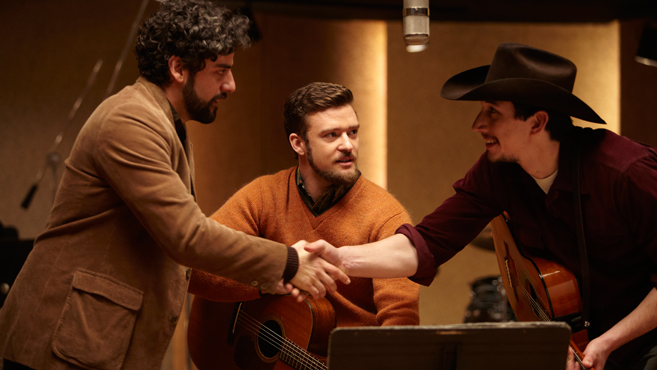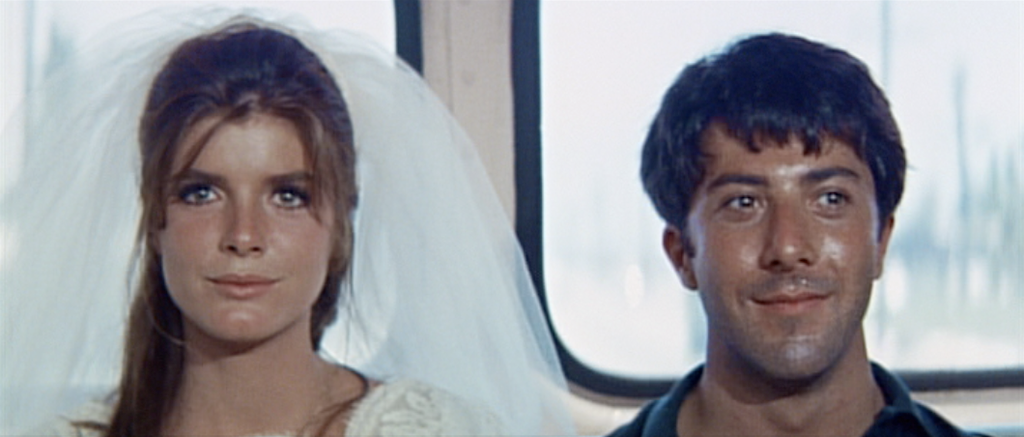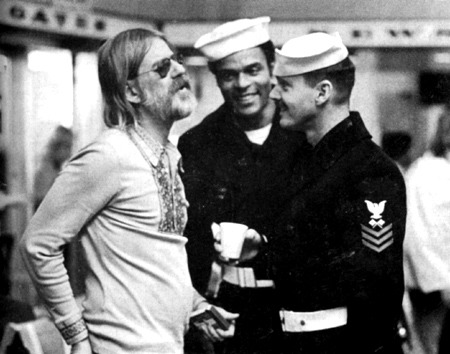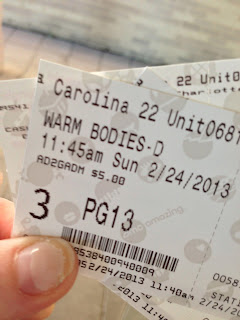Residue Film Reviews
Residue thoughts post-movie screening.
Sunday, January 12, 2014
Why I Really Like "Inside Llewyn Davis" (2013)
I did really like this movie. I have a feeling not everyone will because it's like a slowburn, the significant moments for the main character are based on seeing "signs" in the universe, often in the form of cats appearing. But I am one of those people who loves movies with "signs" in the universe.
The movie explores a folksinger's world during Bob Dylan's 1961 Greenwich Village period with settings like the Gaslight. I personally love this era of Bob Dylan, so I had been excited for the movie ever since I saw the preview.
You do see this guy perform and it's good. He can sing and play well. I would have really liked to see him write in a journal or try to compose something though he does tell his shrewish sister that musicians shouldn't let anyone hear their practice performances or it will ruin the "mystique" that musicians aren't geniuses and even have to practice.
This is not the story of a Bob Dylan character who makes it. This is a story of the folksinger who really tries but isn't making it. I still admire the character for trying. He has integrity. One image that is heartbreaking for me occurs when Llewyn has a box of records of his first album with him as one of his few possessions. He tries to stash it under the table of a place where he's couch surfing only to find that the musician Al Cody whom he is staying with has a similar box of records of his own already there.
Also, the dialogue is AMAZING, the kind of dialogue that makes me smile the whole way through. I love all the jabs at the entertainment industry. I like when John Goodman's character makes fun of Llewyn from the back seat of a car saying that as a folksinger Llewyn probably only plays songs with chords C and G.
In a lot of ways this movie reminded me of Five Easy Pieces. In that movie too, Jack Nicholson's just wandering through his broken life, and in the end he just keeps on going. There is a scene in both movies of a son trying to reach out to a catatonic father. Also, in both movies, the main character does not know how to deal with communicating with the opposite sex so he avoids it when he can.
Could the movie have been a little less "bleak" as some reviewers are saying? Well, let's go back to the idea of "signs" in the movie. The cat doesn't die but walks off wounded.
Friday, June 14, 2013
This Must Be the Place (2012)
Man, I never heard of this movie coming out. I discovered this in Target of all places and I've always been a HUGE Sean Penn fan especially for the movies She's So Lovely and Sweet and Lowdown and for the movies he has directed.
It's beautifully shot, slow paced, but most of all, great dialogue--existential stuff that sounds like poetry.
Sean Penn is hard to look at. He's this guy in drag minus the women's clothing if that makes sense, with Granny glasses. He stumbles around like Frankenstein and speaks very slowly.
Dublin--my favorite part of the film--I wish it all took place here
Cheyenne, played by Penn, is an ex-rocker with a beautiful mansion in Dublin. Occasionally he meets this goth girl Mary at a coffee shop at the mall and tells her to be nice to a guy who works at the mall, Desmond, a shy quiet guy who is trying to ask her out the fact that he likes Mariah Carey is a deal breaker.
His wife played by Frances McDonald is SO COOL. She's smart and his age--all very non-stereotypical for a rocker's wife. There are probably Sharon Osbourne/ Ozzy Osbourne references going on.
A singer of a band called "Pieces of Shit" --great name!! wants him to produce the band's next album. The singer liked that Cheyenne and The Fellows (Cheyenne's band) made the rhythm guitar more important than the lead guitar back in the day and wants the same. "You can change anything but our name," the singer says to Cheyenne, Sean Penn's character.
I wish the movie stayed here. I wish I got to see Cheyenne produce that album. I wish I got to see Mary go on a date with Denton. I wish the movie was more about Cheyenne making music again, but it's not.
New York
The movie gets darker. Cheyenne's father is dead. The search for the Nazi war criminal his father was looking for is on.
David Byrne playing himself may inspire Cheyenne to be an artist. Cheyenne drives around listing to Pieces of Shit's demo perhaps considering to produce them but the movie doesn't go there.
Bad Axe, Michigan
Road trip for a week. Great existential conversations. Scenes that look like Nan Goldin photographs. A Batmanish character randomly walks by him and it reminds me of a David Lynch film.
Alamogordo, New Mexico
Cheyenne hangs out with a woman and her son. I'm pretty confused at this point. I can't tell where this movie is going.
Huntsville, Utah
Harry Dean Stanton!! (The Straight Story; Pretty in Pink; Wild at Heart; Paris, Texas).
The movie is over and I'm not sure anymore if I should be telling you about this movie. This movie is like Paris, Texas or My Own Private Idaho or The Straight Story in that it's a road trip, it's so painfully slow to watch but it's uber cool and leads up to a final scene that reverses the order of things. I'd have to watch it again probably to understand it more.
Monday, April 1, 2013
The Graduate (1967)
The Graduate is one of my favorite movies; it's definitely a good "teaching film."
My favorite moment of the film occurs when toast pops out of the toaster in the Braddock kitchen, ending a scene. It's just so weird and unexpected.
This film was also one of the first to use songs that were already hits instead of a musical score. Simon and Garfunkel's songs permeate the film, sometimes in their entirety. Only the song "Mrs. Robinson" was written for the film itself.
Katherine Ross and Dustin Hoffman as Elaine and Benjamin
I showed it to my film class two weeks ago and last class we spent AN HOUR just talking about and breaking down the last FIVE MINUTES of the film.
Mike Nichols directed. He came from a theater background. The movie he directed before this was Who's Afraid of Virginia Woolf which was in black and white with Richard Burton and Elizabeth Taylor screaming at each other a lot.
Dustin Hoffman was a new type of lead in a movie, not blonde and looking like a model, like Robert Redford who they were originally considering for the part.
Anne Bancroft who plays Mrs. Robinson, Elaine's mother, was in real life only six years older than Dustin Hoffman.
Mrs. Robinson in one of her many leopard-skin outfits.
There is definitely a water motif going on. Benjamin often looks like he is in a fishbowl, when he is in front of a fishbowl, when he is looking out the window at the swimming pool below, when he is deep in the swimming pool in his diving suit.
There are also so many stylistic shots, like the shot of Benjamin which we see through Mrs. Robinson's legs. Or the shot of Benjamin coming out of the hotel and into the Braddock household in one doorway sweep during the montage at the end of Act One. Or the shot of Benjamin's head swinging around three times in a row after Mrs. Robinson comes through the door, naked.
One of many stylistic shots.
My favorite moment of the film occurs when toast pops out of the toaster in the Braddock kitchen, ending a scene. It's just so weird and unexpected.
This film was also one of the first to use songs that were already hits instead of a musical score. Simon and Garfunkel's songs permeate the film, sometimes in their entirety. Only the song "Mrs. Robinson" was written for the film itself.
The ending of The Graduate too is such a surprise and so over the top. It's hard to forget and there's a lot to talk about but not until you've seen the movie....
Friday, March 1, 2013
The Last Detail (1973)
Oh Jack Nicholson, how I love thee!
Hal Ashby, Otis Young, Jack Nicholson
The same is true for director Hal Ashby who also directed probably my favorite film of all time, Harold and Maude.
The Last Detail was last night's showing in my film class. And we laughed a whole bunch. Constant laughing for 103 minutes, even though the underlying reality is SO SAD.
Come to find out, this movie also had Robert Towne on board, who penned Chinatown, as the scriptwriter (adapting the novel by Darryl Ponicsan), and Michael Chapman (Taxi Driver) as the cinematographer--Chapman has a great bit part as the taxi driver who gets the three marines to the nearest "cat house."
Otis Young is great as Nicholson's Buddusky ("Bad Ass") partner, Mulhall, in this journey to take 18-year old convict Meadows (Randy Quaid) to a Portsmouth prison. And his crime? Stealing forty dollars from a charity box and not even getting the forty dollars.
I started off saying to the class something like, "Okay, get ready for some male bonding."
Look at the depth of field in this shot!
I also tried to tell them why Hal Ashby is my favorite director, but it's not so easy because he doesn't have the best picture awards to back me up or the virtuoso-type shots that some film students love. "He's really good at what he does, but it's subtle," I told them. "You'll see how much Wes Anderson is influenced him when we study Wes Anderson later on."
Hal Ashby is really good at editing first of all. He was an editor first on such films as In the Heat of the Night. Secondly, this movie has a kind of realism that you will never see in a Hollywood movie EVER. And finally, he lets actors really shine. John Voight, who Ashby directed in Coming Home (also a must-see film) talks in an interview about how one time he was messing up his lines and Ashby told him not to worry about it, that they were making a movie and what could be greater than that--Take all the time you need. Voight starts to choke up after saying that.
What I love about this movie is how it's a journey, but it also is a movie that shows you how to be adventurous, how to be curious about things going on that you might not understand (like chanting), how it's okay to get angry sometimes, how we're all in some kind of prison so we just have to really savor the few moments we are free.
Jack Nicholson, the king of helping people with low self-esteem onscreen. I will forever by grateful.
Sunday, February 24, 2013
Warm Bodies (2013)
Warm Bodies--Twilight with zombies?
Not really. There is no love triangle, for one. Just a zombie interested in a human girl. He sort of walks around like Frankenstein and grunts.
I think the movie is supposed to be more like Romeo and Juliet than Twilight as the main characters names are "R" and "Julie" and there is a balcony scene where R calls out to Julie from below. The movie came out around Valentines Day, which was some pretty smart marketing.
I watched it for love, for escapism, for a world set right--and it delivered all those elements. It's PG-13. I think parents can enjoy it with their teens. I wasn't scared once.
The director of this movie, Jonathan Levine, did 50/50 and adapted this screenplay from the novel by Isaac Marion.
I thought Nicholas Hoult (the kid from About a Boy!) as a zombie that can only grunt a few words out at a time did a really good job.
I liked the actor who played his best friend "M" (Mercutio?) as well, Rob Corddry. I liked that his best friend was a guy a lot older than him. Did you know that in PG movies, the f-word can only be used once so you have to make it count? Well, in this movie, M gets to say it.
Julie, played by Teresa Palmer, is sweet. Her dad, played by John Malkovich, is not that threatening--I don't really get that casting choice.
One of the best parts of the movie is the set designs. The airport gone apocalyptic, the suburbs gone apocalyptic--very visual stuff.
The next best thing, for me, were the dream sequences, even though they happen from R eating someone's brain (ew!). I don't know how they pull off that kind of fuzzy outlined--highly lit dream sequences but they were ethereal and they contrasted well with the dark zombie world where most of the movie takes place.
The music choices? Very retro--from Bob Dylan's "Shelter from the Storm" to Guns n' Roses "Patience."
How come the bodies were getting warmer? I never figured that out. It can't just be "love," can it?
I haven't read the book by Isaac Marion yet, but I do like to read the book AFTER the movie, so I'll let you know.
Saturday, February 16, 2013
The Princess Bride (1989)
"The Princess Bride" won the poll this week, "What movie should I show my film class on Valentine's Day?" over the movies "Annie Hall" and "Harold and Maude." I guess the other two movies, though perhaps more brilliant, are arguably more of a downer and definitely lesser well known.
"The Princess Bride" was directed by Rob Reiner (his third movie after "Spinal Tap" and "The Sure Thing") and written by William Goldman based on the book he wrote in 1973, sixteen years before the movie came out in 1989!!! Needless to say, the project changed studio hands and directors a few times.
In the commentary, Reiner explains that the movie was hard to market from the beginning because it was kind of an "oddball" movie. It doesn't fit into any one genre.
However, over time, the movie became popular due to its great performances and one liners that made their way into pop culture, lines like "As you wish," and "My name is Inigo Montoya. You killed my father. Prepare to die."
This movie also had the incredible low low budget of 16 million dollars. It was filmed on location and on sound studios in Sheffield, England.
Wesley and Buttercup
Robin Wright who plays Princess Buttercup was only 19 coming fresh off the soap opera "Santa Barbara" (which I used to watch religiously)!
Cary Elwes and Mandy Patinkin (now popular on the tv show "Homeland") practiced sword fighting endlessly for five months so that's them doing all the sword fighting in the movie (except for the flips).
Other great performances in this movie include Billy Crystal, Carol Kane, Wallace Shawn, Peter Cook, Christopher Guest, Chris Sarandon, Fred Savage, Peter Falk, and Andre the Giant.
"Marriage is what brings us together today."
Every time I watch this movie, I wonder how the stunt doubles for the main characters don't break their necks rolling down a really steep hill.
I am also grateful that the princess is a pretty strong and brave character, never whimpering around giant eels and very large rodents.
This movie is definitely a classic that can be enjoyed both by parents and their children. Definitely watch it if you haven't already no matter what age you are.
Sunday, February 10, 2013
Do the Right Thing (1989)
This week in film class we watched Spike Lee's Do the Right Thing and talked about cinematography especially. Every time I see this film, I notice another layer of meaning.
This movie shows racial tensions in Bedford-Stuyvesant, Brooklyn, on the hottest day of the summer.
As serious as this movie is, it has so many funny moments as well and it was great to see the movie with an audience and see everyone laughing so much.
Ernest R. Dickerson, the cinematographer, uses expressionist techniques to show the intense heat of the day such as painting an entire wall red.
The movie begins with Rosie Perez dancing to Public Enemy's "Fight the Power" in a sea of red light in front of a row of stoops that is an homage to West Side Story.
Many canted angles are used to show the increasing tension as the day goes on.
But this movie is about LOVE just as much as HATE. Radio Raheem, a character who walks the streets with the largest boom box wears both of these words, rings, one on each hand.
He has a monologue much like the one Robert Mitchum does in Night of the Hunter, another movie with expressionistic cinematography and beautiful lighting.
There are so many great performances in this movie by so many actors including Spike Lee himself, Bill Nunn, Rosie Perez, Martin Lawrence, Ossie Davis, Ruby Dee, Joie Lee, Danny Aiello, John Turturro, John Savage, Samuel L. Jackson, and more.
At the beginning of the movie, Da Mayor (Ossie Davis) tells Mookie (Spike Lee) to "Do the Right Thing." Does he? At the end of the movie, Mookie does something that causes a riot to break out. It's not obvious that he does the right thing but I think he does--one could argue that the riot is a diversion for the need people have at that moment to kill somebody.
Does Sal, the owner of the pizza joint Sal's pizzeria, have the right to only put photos of Italian-Americans up on the wall or should he like Buggin' Out asks put up photos of African-Americans too since all his customers are African-Americans? Students will always be divided on this issue seeing both sides.
One student wrote on our discussion board later that he had to get pizza after the movie--ha ha. Try to find a place where extra cheese isn't two dollars.
This movie shows racial tensions in Bedford-Stuyvesant, Brooklyn, on the hottest day of the summer.
As serious as this movie is, it has so many funny moments as well and it was great to see the movie with an audience and see everyone laughing so much.
Ernest R. Dickerson, the cinematographer, uses expressionist techniques to show the intense heat of the day such as painting an entire wall red.
The movie begins with Rosie Perez dancing to Public Enemy's "Fight the Power" in a sea of red light in front of a row of stoops that is an homage to West Side Story.
Many canted angles are used to show the increasing tension as the day goes on.
But this movie is about LOVE just as much as HATE. Radio Raheem, a character who walks the streets with the largest boom box wears both of these words, rings, one on each hand.
He has a monologue much like the one Robert Mitchum does in Night of the Hunter, another movie with expressionistic cinematography and beautiful lighting.
There are so many great performances in this movie by so many actors including Spike Lee himself, Bill Nunn, Rosie Perez, Martin Lawrence, Ossie Davis, Ruby Dee, Joie Lee, Danny Aiello, John Turturro, John Savage, Samuel L. Jackson, and more.
At the beginning of the movie, Da Mayor (Ossie Davis) tells Mookie (Spike Lee) to "Do the Right Thing." Does he? At the end of the movie, Mookie does something that causes a riot to break out. It's not obvious that he does the right thing but I think he does--one could argue that the riot is a diversion for the need people have at that moment to kill somebody.
Does Sal, the owner of the pizza joint Sal's pizzeria, have the right to only put photos of Italian-Americans up on the wall or should he like Buggin' Out asks put up photos of African-Americans too since all his customers are African-Americans? Students will always be divided on this issue seeing both sides.
One student wrote on our discussion board later that he had to get pizza after the movie--ha ha. Try to find a place where extra cheese isn't two dollars.
Subscribe to:
Posts (Atom)











